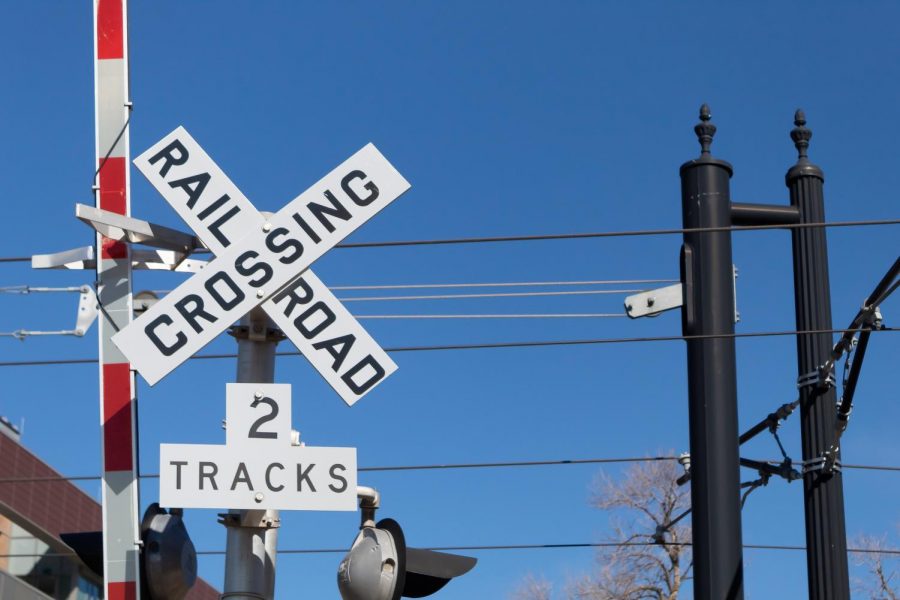Shadley: Utah has a Car-Dependency Problem
2021 Photo by Hailey Danielson | The Daily Utah Chronicle
March 16, 2021
Salt Lake City is the equivalent of an island when it comes to interstate travel. With the exception of one Amtrak train that stops through three times a week, the only form of interstate transportation to and from Salt Lake City is via car or plane. Out of necessity, Salt Lake City has been designed to accommodate the automobile with 0.64 parking lots for every 1000 commuters, wider roads with more lanes to decrease congestion and gas prices lower than the national average. Combining the car-centric culture of the city with the average cost of owning a car being more than $300 below than the national average, it would be entirely irrational to not own one. If, after all of those incentives of car ownership, you still choose to pursue the idyllic pedestrian lifestyle, a harrowing walk down State street or a vulnerable bike ride down 800 South will quickly change your mind. It certainly changed mine.
With 28% of greenhouse gas emissions coming from the transportation sector and 82% of transportation emissions coming from cars and trucks, curbing the climate crisis depends on our ability to get out of our cars. Not only are our cars killing the planet, but they are also killing us. Traffic deaths are the leading cause of death for people between the ages of 5 and 29, air pollution is causing millions of premature deaths globally every year and extreme heat in cities cloaked with asphalt kills hundreds of Americans annually. However, the 91.3% of households that drive an automobile are not to blame: rather, it’s the inability to live a car-free lifestyle in American cities that is at fault. That’s why the Utah State Legislature’s failure to pass S.C.R. 3, a resolution to encourage interstate passenger rail opportunities, is so devastating. It’s yet another signal that Utah values cars more than the economic, social and environmental benefits that would come along with a significantly bolstered interstate rail program.
In comparison to driving solo or flying, traveling by rail emits up to six times fewer emissions. Not only does rail travel reduce emissions, but it also greatly stimulates the economy. Every dollar spent on rail infrastructure creates four dollars of economic benefits, whether that be from newly created jobs, increased activity along corridors or facilitating tourism in rural areas. Additional accessibility for Utah’s rural communities also allows for greater employment opportunities. Similar to the way the FrontRunner allows residents of Provo and Ogden to work in Salt Lake City, an interstate rail could facilitate people living in Cedar City and working in St. George or living in Wendover and working in Salt Lake City. Much in the same way interstate highway off-ramps have created economic opportunities, interstate rail stops would do the same as passengers look to get off the train, stretch their legs and pick up a meal from the nearest restaurant.
In Salt Lake, residents have demonstrated their interest in transportation methods other than automobiles. Before the pandemic, a typical weekday saw an average of 156,000 people riding UTA trains and buses. Even with all the car ownership incentives in place, people are beginning to recognize the value of traveling by other means. Still, people can only make that choice when it’s available to them. Right now, intra-city travel is the only viable form of public transportation and even that could use some serious improvement. As a result, residents of Salt Lake City still own a car for transportation outside of the city and for urgent trips. And, when you own a car, it’s hard to justify not using it.
An interstate rail would allow people to travel outside the bounds of their city and state without relying on a car or plane — moving us one step closer to independence from the automobile. A future without as many cars in Utah would be ripe with economic opportunity and a soaring quality of life. Not only would an interstate rail improve long-distance transportation, but fewer car-dependent people would also mean greater transportation within the city. As demand for public transportation increases, city and state officials will be incentivized to increase the frequency of trains and create a more expansive network of transportation. The greatest impediment to transportation networks that rival those abroad is the cars we’ve become dependent on.
It may sound like a silly, obvious question, but we have to ask ourselves, “Do we care more about cars or people?” Historically, the answer has been the former. It’s disappointing to see the Utah State Legislature answer that question the same way again this year. Much of the historical success of the American economy is predicated on the success of the automobile. Yet, those same cars are driving our environment, and, in turn, our economy, off of a cliff. If we are to save ourselves, we need to prioritize ourselves over our cars.









